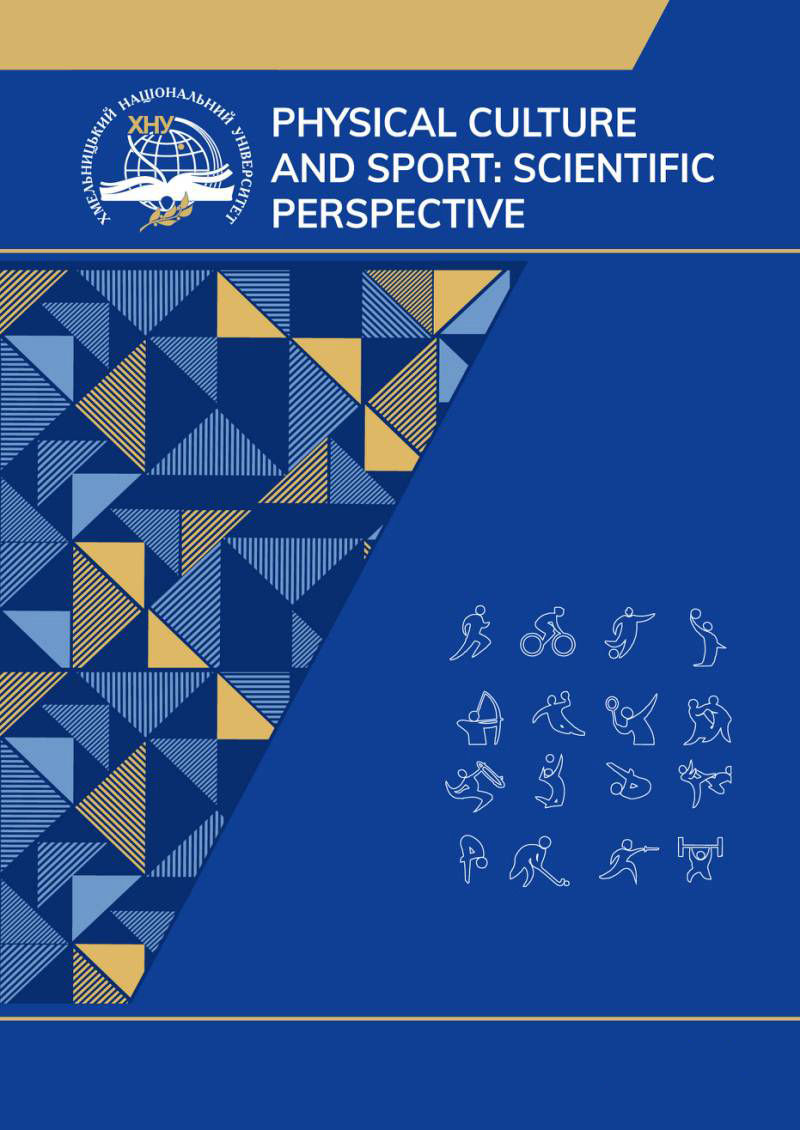THE INFLUENCE OF NEUROPSYCHOLOGICAL MOTOR PHYSICAL THERAPY ON THE DYNAMICS OF PHANTOM PAIN IN LOWER LIMB AMPUTATION
DOI:
https://doi.org/10.31891/pcs.2024.1.68Keywords:
phantom pain, physical therapy, mirror therapy, phantom exercisesAbstract
Amputation of the lower limb is a serious psycho-emotional trauma, with serious functional, psychological and social consequences for the patient, which affect the duration and quality of life. Unfortunately, as a result of hostilities in Ukraine, the number of amputees is constantly growing.
In addition to these problems associated with amputation, a serious and still unresolved issue is the treatment of phantom pain, which is poorly amenable to pharmacological therapy and sometimes makes life unbearable for amputees.
The aim of the study was to analyze the effect of mirror motor therapy and phantom motor skills on reducing the intensity of phantom pain in amputated limbs.
Materials and Methods. The study used methods of theoretical (generalization of scientific and methodological literature on the subject of the study, analysis of case studies) and practical levels of research (development of methods for conducting mirror and phantom motor research, selection of therapeutic exercises for their implementation, setting time limits for this treatment).
Results: 16 patients with lower limb entanglements at the level of the thigh and lower leg - 1.5-2 years ago, with severe and very severe phantom pain - were included in the experimental study. Patients were randomly divided into two groups - control and main.
Patients in the control group were treated according to the usual rehabilitation program in this institution - physical therapy exercises, massage, physiotherapy procedures. In addition to the above therapy, the main group was additionally engaged in experimental methods that we proposed to overcome phantom pain – mirror gymnastics and phantom motor skills. All details of the pedagogical experiment were agreed upon with members of the rehabilitation team and patients.
The experiment lasted for a month (4 weeks), during which three test measurements of the intensity of phantom pain manifestations in patients were conducted (at the beginning of the experiment, after 2 weeks and after 4 weeks - after the end of the experiment). The intensity of pain manifestations was determined by two scales: a 10-point visual analog pain scale; and an 8-point behavioral pain scale.
Results. After 4 weeks of the experiment, according to subjective manifestations (data from visual-analog table 2) the intensity of phantom pain in patients of the main group decreased by 38.9% against 17.5% in the control group (difference 21.4%), and according to objective sensations (table 3), respectively, by 41% against 14.3 (difference 26.8%).
Conclusions. Physical, psychological and social adaptation of patients with phantom pain after lower limb amputation is a multifaceted and complex process. Since there are no reliable methods for overcoming phantom pain after amputation, it is necessary to continue researching various aspects of this problem. In our opinion, a promising area for combating phantom pain is the widespread use of various means of physical therapy, primarily neuropsychological, namely, mirror motor therapy and phantom motor skills.
References
Flor H, Nikolajsen L, Jensen TS. Phantom limb pain: a case of maladaptive CNS plasticity? Nature Reviews Neuroscience. 2006;7(11):873–881.
Dickinson BD, Head CA, Gitlow S, Osbahr AJ. Maldynia: pathophysiology and management of neuropathic and maladaptive pain—a report of the AMA council on science and public health. Pain Medicine. 2010;11(11):1635–1653.
Baron R. Mechanisms of disease: neuropathic pain—a clinical perspective. Nature Clinical Practice Neurology. 2006;2(2):95–106.
Spring J. Neural plasticity and the progress of phantom pain research mind matters. The Wesleyan Journal of Psychology. 2010;5:13–26.
Ayoub SN, Hakim KY. Comparative study of dexmedetomidine or fentanyl as an adjuvant to epidural bupivacaine for prevention of stump and phantom pain in adult patients undergoing above-knee or below-knee amputation: a randomized prospective trial. Res Opin Anesthesia Intens Care. 2019;6(3):371.
Mioton LM, Dumanian GA, Shah N, Qiu CS, Ertl WJ, Potter BK, Souza JM, Valerio IL, Ko JH, Jordan SW. Targeted Muscle Reinnervation Improves Residual Limb Pain, Phantom Limb Pain, and Limb Function: A Prospective Study of 33 Major Limb Amputees. ClinOrthopRelat Res. 2020;478:2161–2167.
Luza, L.P.; da Silva, D.R.P.; Ferreira, E.G.; Pires, G.K.W.; Filho, P.J.B.G.; da Silva, R. Physical Activity Among People With Lower Limb Amputation in Brazil. J. Phys. Act. Health 2021, 18, 1269–1276.
Hijmans, J.M.; Dekker, R.; Geertzen, J.H.B. Pre-operative rehabilitation in lower-limb amputation patients and its effect on post-operative outcomes. Med. Hypotheses 2020, 143, 110134.
Wittkopf PG, Johnson MI. Mirror therapy: a potential intervention for pain management. Rev AssocMéd Bras. 2017;63(11):1000–5.
Cárdenas K, Aranda M. [Psychotherapies for the Treatment of Phantom Limb Pain] Rev ColombPsiquiatr. 2017;46:178–186.
Thair H, Holloway AL, Newport R, Smith AD. Transcranial Direct Current Stimulation (tDCS): A Beginner's Guide for Design and Implementation. Front Neurosci. 2017;11:641.
Ambron E, Miller A, Kuchenbecker KJ, Buxbaum LJ, Coslett H. Immersive low-cost virtual reality treatment for phantom limb pain: evidence from two cases. Front Neurol. 2018;9:67.
Li H, Li Y, Guo Z, Hao L, Tang Y, Guo Y, Zhang D, He L, Wang Y, Meng Y, Li F, Ni J. Low-temperature plasma radiofrequency ablation in phantom limb pain: A case report. Brain Circ. 2018;4:62–64..
Raffin E, Richard N, Giraux P, Reilly KT. Primary motor cortex changes after amputation correlate with phantom limb pain and the ability to move the phantom limb. Neuroimage. 2016;130:134–44.
Raffin E, Richard N, Giraux P, Reilly KT. Primary motor cortex changes after amputation correlate with phantom limb pain and the ability to move the phantom limb. Neuroimage. 2016;130:134–44.
Ülger Ö, Topuz S, Bayramlar K, Şener G, Erbahceci F. Effectiveness of phantom exercises for phantom limb pain: a pilot study. J Rehabil Med. 2009;41(7):582–4.





